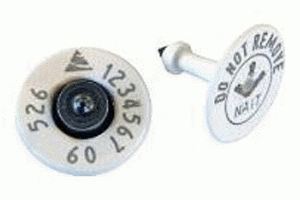
By Allan Barber
The saga continues, as my Warkworth friend attempts to find out how NAIT intends to ensure correct reconciliation of livestock records, but as yet without a totally satisfactory answer.
After further contact, NAIT’s acting Group Manager Sam McIvor replied with answers to the main points raised and I understand the conversation will continue, as both parties try to convince the other of their respective point of view.
At its most basic, the debate centres round the issue of ensuring 100% accuracy which is only possible, if there is 100% retention of tags at the time of stock movement or every animal has a second or reserve tag.
At present NAIT estimates there is 98% retention. My friend who came through the mad cow disease disaster as well as FMD outbreaks in the UK is adamant the only acceptable position is 100% accuracy in the event of a disease outbreak.
The alternative options are to insert a second tag in all animals or to provide a scanner for every farmer to be able to scan a new tag and upload that information to the NAIT recording system. However it appears not to be practical (or affordable?) for all farmers to insert two tags, while NAIT’s perspective is that the provision of scanners to every farm would be financially impossible.
However NAIT offers its ‘Stocktake’ service which allows farmers with scanners to upload information to NAIT, while hiring a scanner, using one owned by a third party like the stock and station agency, or sharing one with neighbours are other options. There is also a difference of opinion about the cost and affordability of scanners.
This of course still ignores the elephant in the room of the need to trace movements of all cloven footed livestock, not just cattle and deer. Nevertheless it would seem to be important to bring the present NAIT scheme up to 100% accuracy, if that is achievable; if not the question must be asked whether the enormous investment in NAIT is actually capable of achieving its original objectives.
In answer to NAIT’s explanation, my friend has expressed concern, asking if NAIT has lost sight of its original objective which must surely be to provide lifetime traceability of all cloven footed animals primarily to help control the outbreak of notifiable diseases, in other words avoidance of a national financial disaster.
He then goes on to pose six more questions and offer solutions to all of them. Among them he suggests provision of scanners, funded 50/50 by farmers and government, the formation of a register populated by scanned data for every animal movement and a simple but comprehensive stock checking system, similar to vehicle registration or bank reconciliation.
The scanners would facilitate a six monthly physical stock take of all livestock on farm which would be of great benefit to government agencies such as MPI, as well as integration with on farm records.
I understand the discussion will continue, but at this point my friend is not convinced by NAIT’s protestations which claim 98% accuracy is, if not ideal, at least acceptable because it is much better than it used to be before NAIT. With his experience from the UK, he is convinced New Zealand should be aiming for a 100% robust system which would be the envy of the rest of the world and could be turned into a very positive marketing story.
I will await the result of these negotiations with a lot of interest.
To subscribe to our weekly Rural email, enter your email address here.
Farms For Sale: the most up-to-date and comprehensive listing of working farms in New Zealand, here »
Here are some links for updated prices for
- lamb
- beef
- deer
- wool
P2 Steer
Select chart tabs
-----------------------------
Allan Barber is a commentator on agribusiness, especially the meat industry, and lives in the Matakana Wine Country. He is chairman of the Warkworth A&P Show Committee. You can contact him by email at allan@barberstrategic.co.nz or read his blog here ». This article first appeared in Farmers Weekly. It is here with permission.
6 Comments
Electronic solutions aren't always the answer. If there was a biosecurity outbreak and an area of farmland was cordoned off. Wouldn't it be just as easy to talk to the farmers using assure quality staff and local vets in that area and ask them about their recent stock movements? Instead they will be wasting time chasing up inaccurate Nait records.
We should also annually round up all the feral deer goats and pigs. Nait tag the youngsters and check off all the older ones.
Just to be sure the Nait records are correct.
Yes maybe we could tag the possums as well... ;)
perhaps it's time for some 'cost cutting'?
I hear what you are saying Andrew so we stick to tagging the possums in one ear only

We welcome your comments below. If you are not already registered, please register to comment
Remember we welcome robust, respectful and insightful debate. We don't welcome abusive or defamatory comments and will de-register those repeatedly making such comments. Our current comment policy is here.